7 Picturesque German Towns That Should Be On Your Bucket List
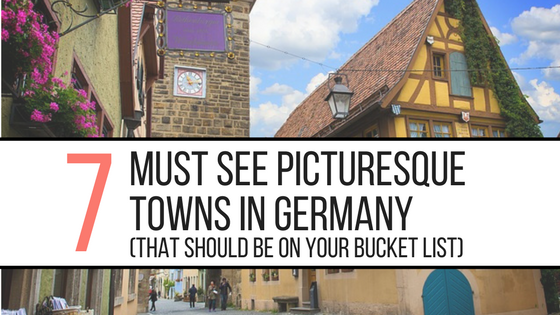
Meet Amanda and Nathan
 We are a restless family of four, looking for adventure, ways to increase our funds, and more educaitonal options for our littles. We have exchanged things for experiences. Join us!
We are a restless family of four, looking for adventure, ways to increase our funds, and more educaitonal options for our littles. We have exchanged things for experiences. Join us!
Ever wanted to visit a fairytale village? Germany is chalked full of them!
Germany is one of the oldest countries in Europe with several small towns that remain unaltered by the passage of time. It also has very a laid back, friendly and welcoming culture that will make you glad you visited.
Given all of these things and the fact that their beer is insanely delicious and cheaper than bottled water, it should definitely be on your must-visit country list.
In this article, we will explore 7 amazing German towns that should absolutely be on your bucket list.
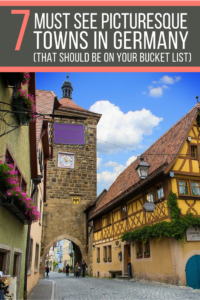
Related Posts:
Stunning Scottish Adventures to Enjoy With Your Friends
How to Enjoy a Euro Disney Christmas and avoid these regrets
How To See Paris in a Day: Like a Champe
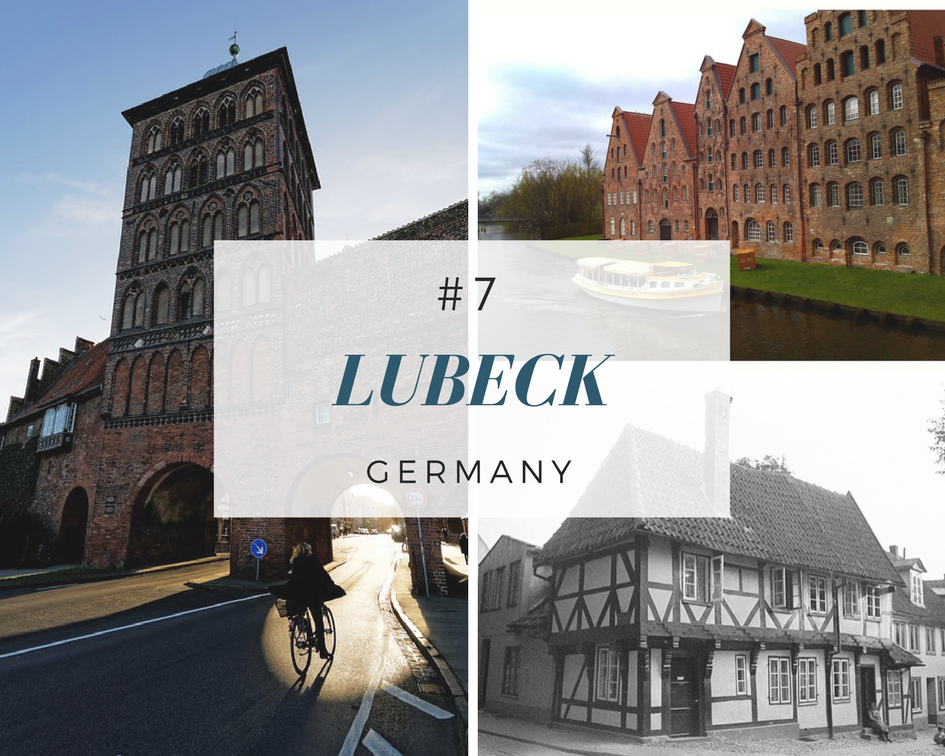
Background
Although it could be argued that Lubeck is really a small city rather than a large town, we’ve included it anyway. Lubeck has approximately 13 centuries of discovered history which is quite impressive for a ‘town’ of less than 220,000 people. Despite the major damage to the city from the ‘advancements’ of the Industrial Revolution and the ravages of WWII, this German town has still preserved enough character and small-town charm to make it on our list.
What You Have to See:
- Holstentor gate: Known for its two-round towers and
arched entrance, this gate is regarded today as the symbol of Lubeck. - St. Mary’s Church: Built in the late 11th century It has been a constant symbol of the power and prosperity of this Hanseatic city it has the tallest brick vault in the world, the height of the central nave being 126 ft tall!
- Old City: Lubeck also boasts some amazing crow-stepped gable brick buildings that are the hallmark of Hanseatic Cities such as Stockholm, Hamburg, Krakow, Antwerp, Novgorod, and London. These buildings include the amazing Lübecker Rathaus, the Holy Spirit Hospital, and the Salzspeicher warehouse.
(Stay tuned for a tip on how to travel across Germany for free!)
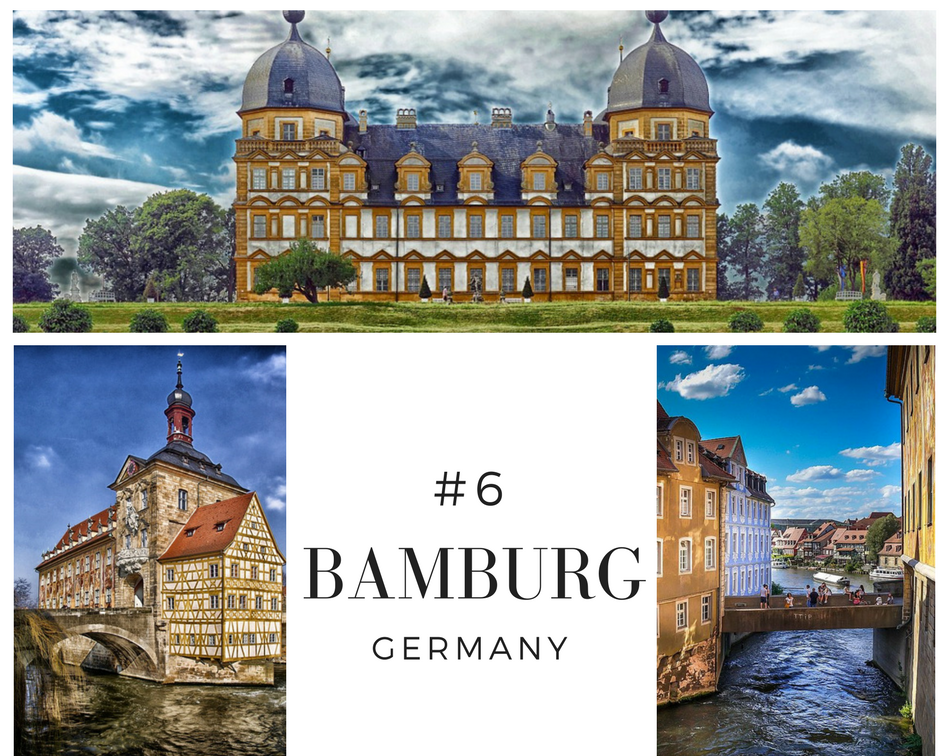
Background
With a population of 73,000 Bamburg is certainly a large town, but still well under 100,000 people. For a short time in the early 9th Century Bamberg was the centre of the Holy Roman Empire and King Henry II and his wife Kunigunde were both buried in the cathedral.
What You Have to See:
- Bamberg Cathedral: The cathedral is a very impresive looking late Romanesque building with four towers. The original cathedral was built in 1012 but the ‘new’ cathedral was rebuilt by Saint Otto of Bamberg in 1111 after a fire partially destroyed it. Later in the 13th century it received its present late-Romanesque facelift.
- The Alte Hofhaltung and the Neue Residenz: These amazingly well preserved buildings have served as the residences of bishops from the 16th century on.
- The Old Town Hall: Early in the town's history the Church refused to give the people of Bamburg land to build their town hall on. Not to be stopped they made their own land in the middle of the river and built the present building only accesible by the two attached bridges.

Background
Nördlingen is a town in the Donau-Ries district with a population of approximately 19,000 and a histroy streching back to 898 AD. Today it is one of only three towns in Germany that still has a completely established city wall, the other two being Rothenburg ob der Tauber and Dinkelsbühl.
s. Nördlingen is also known for the Scharlachrennen, a horse riding tournament that was first mentioned in 1463. With one of the only three city walls still preserved in Germany this town makes the cut.
What You Have to See:
- Saint George's Church: It has a 90 m steeple, called "Daniel", which is made of a special rock that contains ‘impact glass’ or shocked quartz giving it a truly unique appearance.
- St. Salvator Church: This 'small' church is quite pretty and creates a feeling of inner purity with it's light walls and beautiful icons.
- The Spital: The Holy Spirit hospital was built in 1518 and since 1959, it is used as a City Museum. The Museum represents the history of the region and its people very vividly.
- The Scharlachrennen: This horse riding tournament is the largest in Southern Germany, includes racing and jumping and has been running since 1463.

Background
Dinkelsbühl is a former Free imperial city of the Holy Roman Empire located in southern Germany. Dinkelsbühl lies on the northern part of the Romantic Road, and is one of three particularly striking historic towns on the northern part of the route, the others being Rothenburg ob der Tauber and Nördlingen.
What You Have to See:
- St. George's Minster: This is a beautiful masterpiece in the Gothic style of the late 15th century and it is the largest "hall church" in the country.
- Tuetonic Castle: The original castle of the Teutonic Order in Dinkelsbühl was called 'Tewtscher Hof' and was was moved to it's current position in the late 14th century. The valuable Rocaille cartouche on the gable and rococo chapel with intricate stucco are definitely worth seeing.
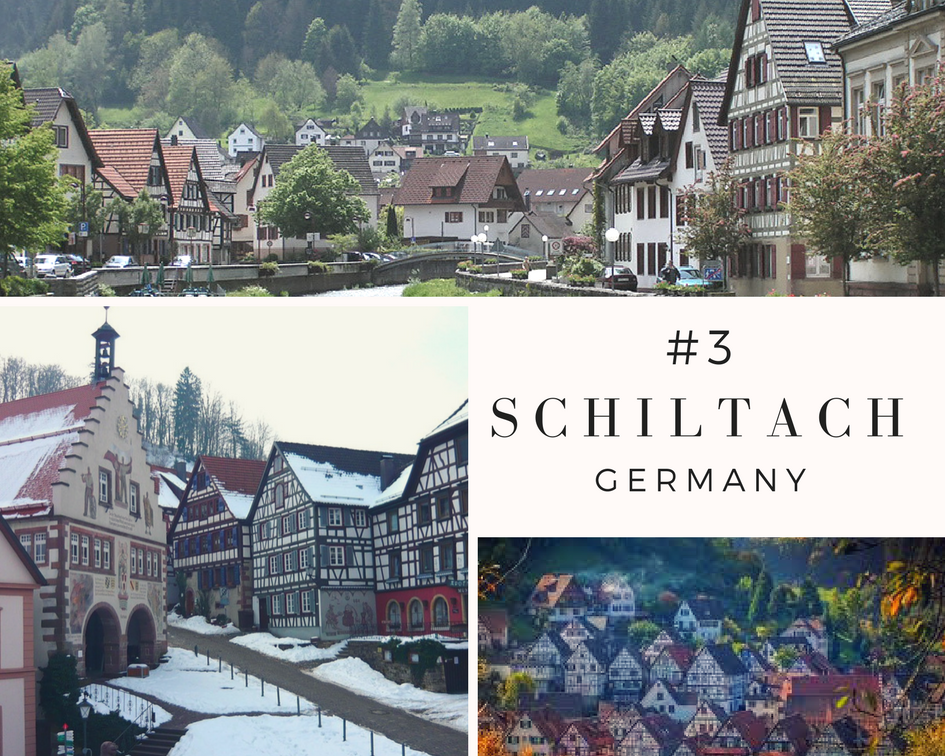
Background
With a population of only 3,800 this is truly a small town. If you want to see what an authentic black forest half timbered town looked like in the 16th century you won’t need a time machine. You can travel to Schiltach and stay at an authentic German Guesthaus to get your German renaissance on. Walk the cobblestoned streets up and down the old town, cross stone bridges and have a picnic on the banks of the Kinsig river.
What You Have to See:
- Town Hall: The crow-stepped gable of the Town Hall was built in 1593 and acts as the centrepeice of the 'old town'
- The Gasthaus zum Adler: Was built in 1604 and is an active Hotel with an amazing restaurant and interior. Explore traditional recipes at the various guesthaus’ for some sausages, spaetzle and the must have ‘real’ black forest cake.
- Nearby Ruins: If you like to hike you can easily take to the hills and explore one of the three ruined castles in the area.
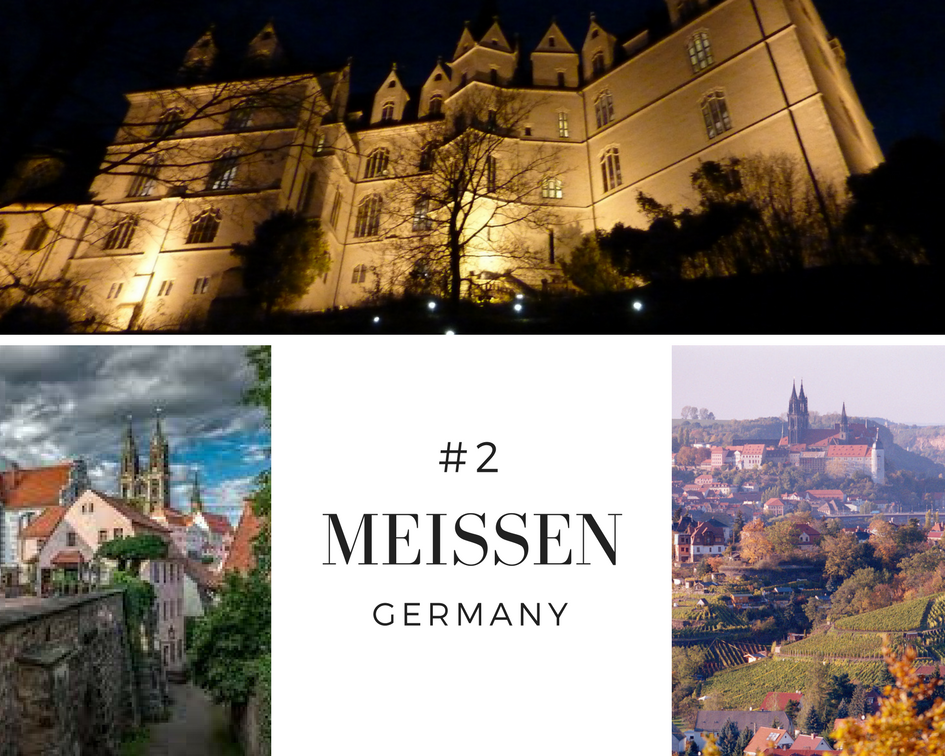
Background
With a population of nearly 30,000 this town still feels small and is located about 25 km northwest of Dresden. Meissen is the home of Meissen porcelain, the Gothic Meissen Cathedral and the Meissen Frauenkirche. Originally settled by the slavic people it was taken by the Germans in 936 and swapped national hands more than a few times in its long history. Some claim that the Albrechtsburg Castle is the first castle to be used as a royal residence in the German-speaking world. Take one of the paths up the hill and into the castle to begin a winding tour through the old town.Meissen is famous for producing the first high-quality porcelain outside of the Orient. From spring to autumn, several festivals take place in Meissen, such as the pottery market and the Weinfest which make it a popular destination. The Christmas market in Meissen is small but makes up for its small size with fantastic food, drinks and authentic feeling vendors.
What You Have to See:
- Albrechtsburg castle: The first castle to be used as a royal residence in the German-speaking world certainly feels medieval.
- Meissen Cathedral: Built in 1260 on the same hill as Albrechtsburg castle it became one of the smallest cathedrals in Europe due to the limited space.
- Meissen’s Historical District: Located at the foot of the castle hill. It contains many buildings of Renaissance architecture and small gates that magically transport you into a Tolkien novel or historical fiction.
- Historic Restaurant Vincenz Richter: Boasts serving ale and food since 1512 and is surrounded by enough weapons and armour to make a Throne of Swords not feel out of place.
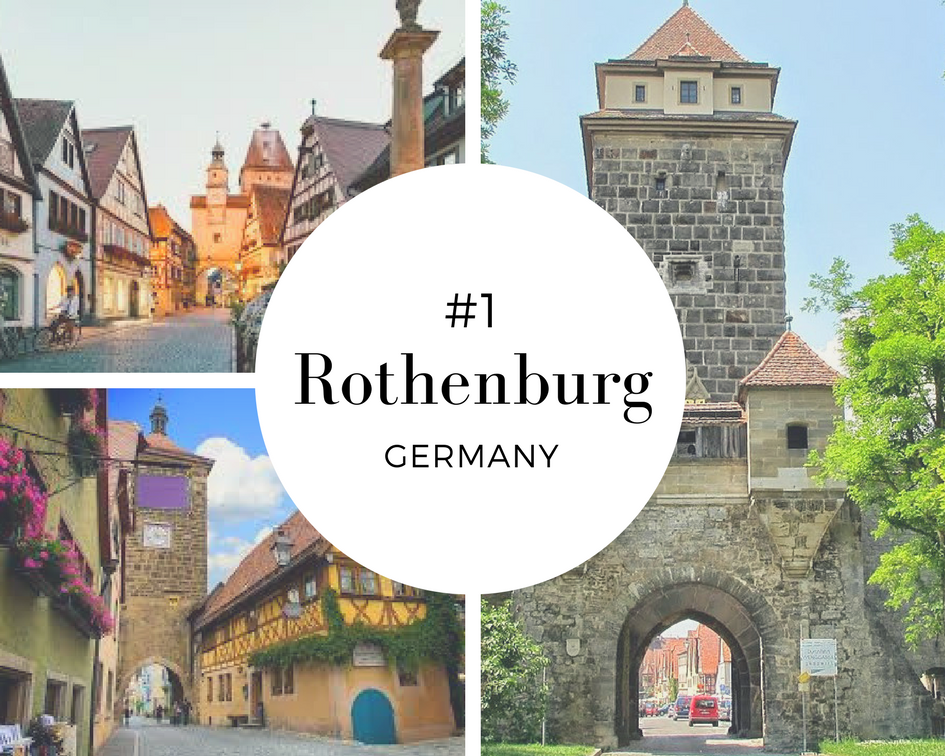
Background
With 11,000 people Rothenburg Ob Der Tauber is still a relatively small town. It is also perhaps one of the most photographed and iconic of our German towns. Rothenburg is well known for its remarkably well-preserved medieval old town making it a destination for tourists from around the world. In this town you will see great examples of both the iconic timber frame homes and the crow-stepped gable townhouses with their small attic doors and pulley systems. The town of Rothenburg has done such an amazing job preserving the past while allowing modern business that it would be a crime for it to not have been chosen as our #1 German town that should already be on your bucket list.
- The Outer Walls: The Outer walls and towers of the city were built in the 13th century. The “White Tower” and the Markus Tower with the Röder Arch are both immaculately preserved.
- City Centre: The centre of Rothenberg was the marketplace. Here the development of the oldest fortification, the old cellar/old moat, can be seen.
- St. Jakob's Church: A massive cathedral with an stuningly carved and painted alter has a long history and has remained intact since being built in the early 14th century.
Final Thoughts
Every one of these amazing small German towns are incredibly photogenic and will be guaranteed to make your friends and family jealous with every post, photobook, and wall hanging. They also all have amazing histories that that are sure to keep armchair historians deeply engaged as they walk through the amazingly preserved streets, castles and cathedrals.
Most importantly these towns have managed to escaped major disasters, wars and other serious calamities that have destroyed the historical beauty of many European towns and cities. This is an opportunity that shouldn't be passed up, so close your laptop and go write these town names on your bucket list!
Secret Free Travel Tips:
You can ask your place of accommodations for a Konus 'Guest Card'. This train pass will get you to 140 participating towns and villages across Germany! What a great gift, right!?! If you want to find out more information, then check it out here.
Popular Posts
One of best ways to make money online is through affiliate marketing, which is simply the art of advertising for others throughout your blog (we teach about this on our website). We use affiliate links on this website directing you to products and deals that we believe are great. They may not be perfect for you and there may be outdated information, so keep an eye on what you click on! Let us know if you have any questions.

